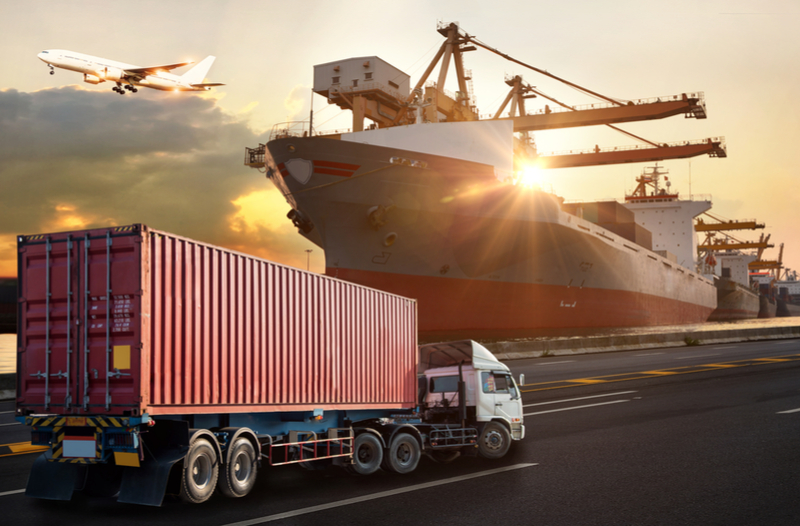Due to the rapid growth of e-commerce, many businesses require international shipping services. An international freight forwarder coordinates all the steps involved in global transport, from picking up the goods, to securing transit space. As a business owner requiring international shipping services, a basic understanding of the process is essential.
Here we’ll explain international shipping, the freight forwarder’s involvement, and some of the charges involved.
What Is the Role of a Freight Forwarder?
A freight forwarder organises the shipment of goods from point A to point B for an agreed price, and within a specific timeframe. The majority of their time is spent communicating with all parties involved, over the phone or computer systems. They work to quickly resolve any issues, and proactively keep you updated on the overall progress of the shipment.
The Steps of International Shipping
There are seven key steps involved in international shipping – five physical and two documentation steps. At each stage, there will be an associated cost that either the business owner or the receiver needs to settle.
Here are the seven steps:
Export Haulage
This is the movement of the cargo from the shipper to the forwarder. When the goods are less than a container load, the forwarder’s premises are likely to be the original warehouse. From there, the goods will usually be moved via lorry, rail, or both.
If it’s agreed that the shipper is responsible for this step, they’d typically coordinate things with a local transportation company. If it’s the consignee’s responsibility (the person financially responsible for receiving the shipment), it’s better to use a freight forwarder offering export haulage as part of their international shipping service.
Export Customs Clearance
There are custom procedures to meet the regulatory requirements involved in every shipment leaving a country. This step is a declaration and submission of documents to the appropriate authorities. It must be performed by companies with valid custom licenses, such as the freight forwarder, an agent appointed by them, or a customs house broker appointed by the shipper.
The export customs clearance step must be completed so the cargo can exit the country.
Source Handling
This stage encompasses the inspection and physical handling of the cargo; from receiving it at the source warehouse until it’s loaded onto a container. There are lots of steps performed by different parties:
- Inspection
- Plans for loading combined with other cargos
- Packed into a container
- Taken to the port to be loaded onto a vessel
Sea Freight
The international freight forwarder selects the best shipping line to execute the sea freight from origin to destination within the required timeline. The forwarder and shipping line company will have a contract for transporting the container. In this case, the consignee or shipper won’t need to interact with the shipping line, though the charge will be assigned to either of them.
When shipping from port to port, surcharges include bunker and currency adjustment.
Import Customs Clearance
This step may be completed before the cargo gets to the destination country. It must be finalised before the cargo leaves the customs area (typically the warehouse) in the country of origin.
Destination Handling
Cargo handling also takes place at the destination before it can be released. The container is transferred from the ship to the port, then onto the forwarder’s destination warehouse. This step also includes unpacking the container, scanning the goods, and prepping them for the consignee to collect.
During destination handling, the freight forwarder will manage multiple destination charges. All of which need to be paid off to release the cargo to the consignee.
Import Haulage
The last step is the transportation and delivery to the consignee. This part can be performed by either the freight forwarder or local transport company appointed by the consignee. The cargo will be delivered to a particular address, but the consignee will be responsible for unloading the lorry.
Behind the Scenes of International Shipping
The role of an international freight forwarder is to ensure your goods are moved from point A to point B for a set price, within an agreed timeframe. This end-to-end process involves many different parties, protocols, and charges.
Having a basic overview and understanding of how everything comes together is important for making informed business decisions in this area.

